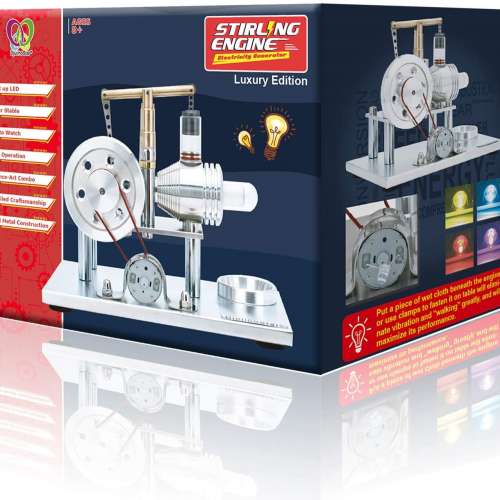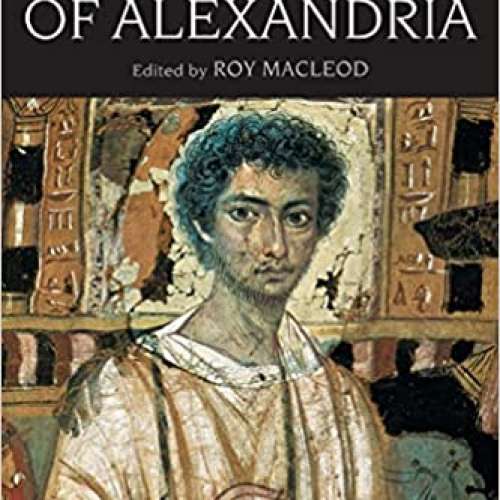

Hero of Alexandria (0010-0070)
Hero of Alexandria was a Greco-Egyptian mathematician and engineer who was active in his native city of Alexandria, Roman Egypt. He is often considered the greatest experimenter of antiquity and his work is representative of the Hellenistic scientific tradition.
Hero published a well-recognized description of a steam-powered device called an aeolipile sometimes called a "Hero engine". Among his most famous inventions was a windwheel, constituting the earliest instance of wind harnessing on land. He is said to have been a follower of the atomists. In his work Mechanics, he described the pantographs. Some of his ideas were derived from the works of Ctesibius.

In mathematics he is mostly remembered for Heron's formula, a way to calculate the area of a triangle using only the lengths of its sides.
Much of Hero's original writings and designs have been lost, but some of his works were preserved—mostly in manuscripts from the Eastern Roman Empire, and a smaller part in Latin or Arabic translations.
Life and career
Hero's ethnicity may have been either Greek or Hellenized Egyptian. It is almost certain that Hero taught at the Musaeum which included the famous Library of Alexandria, because most of his writings appear as lecture notes for courses in mathematics, mechanics, physics, and pneumatics. Although the field was not formalized until the twentieth century, it is thought that the work of Hero, his automated devices in particular, represents some of the first formal research into cybernetics.
Inventions
Hero described the construction of the aeolipile a version of which is known as Hero's engine which was a rocket-like reaction engine and the first-recorded steam engine although Vitruvius mentioned the aeolipile in De Architectura some 100 years earlier than Hero. It was created almost two millennia before the industrial revolution. Another engine used air from a closed chamber heated by an altar fire to displace water from a sealed vessel; the water was collected and its weight, pulling on a rope, opened temple doors. Some historians have conflated the two inventions to assert that the aeolipile was capable of useful work.

- The first vending machine was also one of his constructions; when a coin was introduced via a slot on the top of the machine, a set amount of holy water was dispensed. This was included in his list of inventions in his book Mechanics and Optics. When the coin was deposited, it fell upon a pan attached to a lever. The lever opened up a valve which let some water flow out. The pan continued to tilt with the weight of the coin until it fell off, at which point a counter-weight would snap the lever back up and turn off the valve.
- A wind-wheel operating an organ, marking the first instance in history of wind powering a machine.
- Hero also invented many mechanisms for the Greek theater, including an entirely mechanical play almost ten minutes in length, powered by a binary-like system of ropes, knots, and simple machines operated by a rotating cylindrical cogwheel. The sound of thunder was produced by the mechanically-timed dropping of metal balls onto a hidden drum.
- The force pump was widely used in the Roman world, and one application was in a fire-engine.
- A syringe-like device was described by Hero to control the delivery of air or liquids.
- In optics, Hero formulated the principle of the shortest path of light: If a ray of light propagates from point A to point B within the same medium, the path-length followed is the shortest possible. It was nearly 1000 years later that Alhacen expanded the principle to both reflection and refraction, and the principle was later stated in this form by Pierre de Fermat in 1662; the most modern form is that the optical path is stationary.
- A standalone fountain that operates under self-contained hydro-static energy; now called Heron's fountain.
- A programmable cart that was powered by a falling weight. The "program" consisted of strings wrapped around the drive axle.
Mathematics
Hero described a method for iteratively computing the square root of a number. Today, however, his name is most closely associated with Heron's formula for finding the area of a triangle from its side lengths. He also devised a method for calculating cube roots in the 1st century AD. He also designed a shortest path algorithm, Given two points A and B on one side of a line, find C a point on the straight line, that minimizes AC+BC.
Cultural references
- A 1979 Soviet animated short film focuses on Hero's invention of the aeolipile, showing him as a plain craftsman who invented the turbine accidentally
- A 2007 The History Channel television show Ancient Discoveries includes recreations of most of Hero's devices
- A 2010 The History Channel television show Ancient Aliens episode "Alien Tech" includes a discussion of Hero's steam engine
- A 2014 The History Channel television show Ancient Impossible episode "Ancient Einstein"
- Paul Levinson's 2006 science fiction novel, The Plot to Save Socrates, features Hero as an American time traveler.
- A 2020 Netflix adult animated television series, Blood of Zeus, depicts Heron as the demigod son of Zeus and half-brother of Seraphim, in which he is voiced by Derek Phillips.
Bibliography
The most comprehensive edition of Hero's works was published in five volumes in Leipzig by the publishing house Teubner in 1903.
Works known to have been written by Hero:
- Pneumatica, a description of machines working on air, steam or water pressure, including the hydraulis or water organ
- Automata, a description of machines which enable wonders in temples by mechanical or pneumatical means e.g. automatic opening or closing of temple doors, statues that pour wine, etc.; see Automaton and Bernardino Baldi's translation
- Mechanica, preserved only in Arabic, written for architects, containing means to lift heavy objects
- Metrica, a description of how to calculate surfaces and volumes of diverse objects
- On the Dioptra, a collection of methods to measure lengths, a work in which the odometer and the dioptra, an apparatus which resembles the theodolite, are described
- Belopoeica, a description of war machines
- Catoptrica, about the progression of light, reflection and the use of mirrors
Works that sometimes have been attributed to Hero, but are now thought most likely to have been written by someone else:
- Geometrica, a collection of equations based on the first chapter of Metrica
- Stereometrica, examples of three-dimensional calculations based on the second chapter of Metrica
- Mensurae, tools which can be used to conduct measurements based on Stereometrica and Metrica
- Cheiroballistra, about catapults
- Definitiones, containing definitions of terms for geometry
Works that are preserved only in fragments:
- Geodesia
- Geoponica
More facts
Heron's fountain
Heron's formula
Vending machine
The Library of Alexandria: Centre of Learning in the Ancient World
The Pneumatics of Hero of Alexandria




![Agora [DVD]](https://geniuses.club/public/storage/109/049/170/036/200_200_60b742d5d6351.jpg)



























![Agora [DVD]](https://geniuses.club/public/storage/109/049/170/036/500_500_60b742d5d6351.jpg)
















